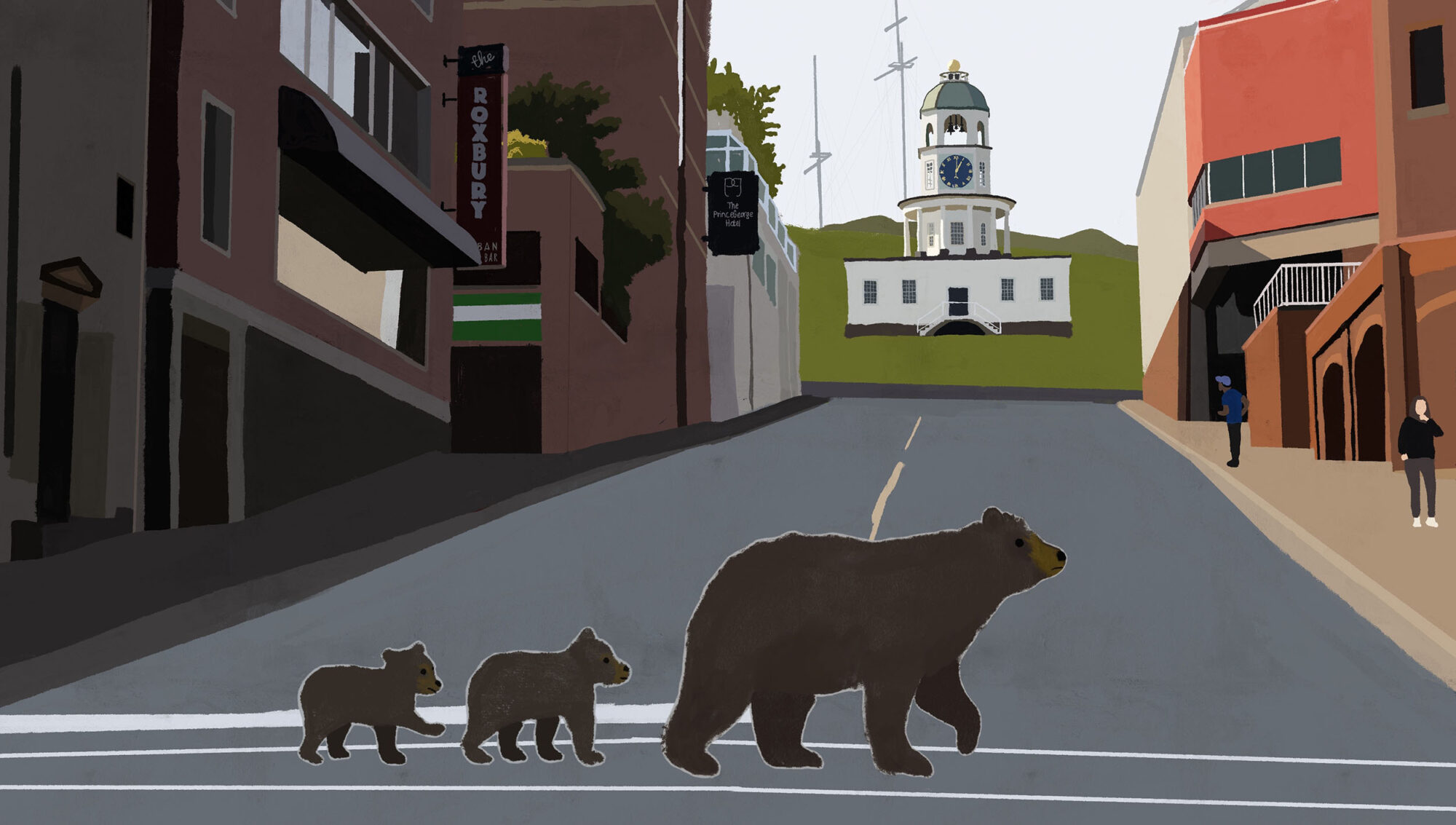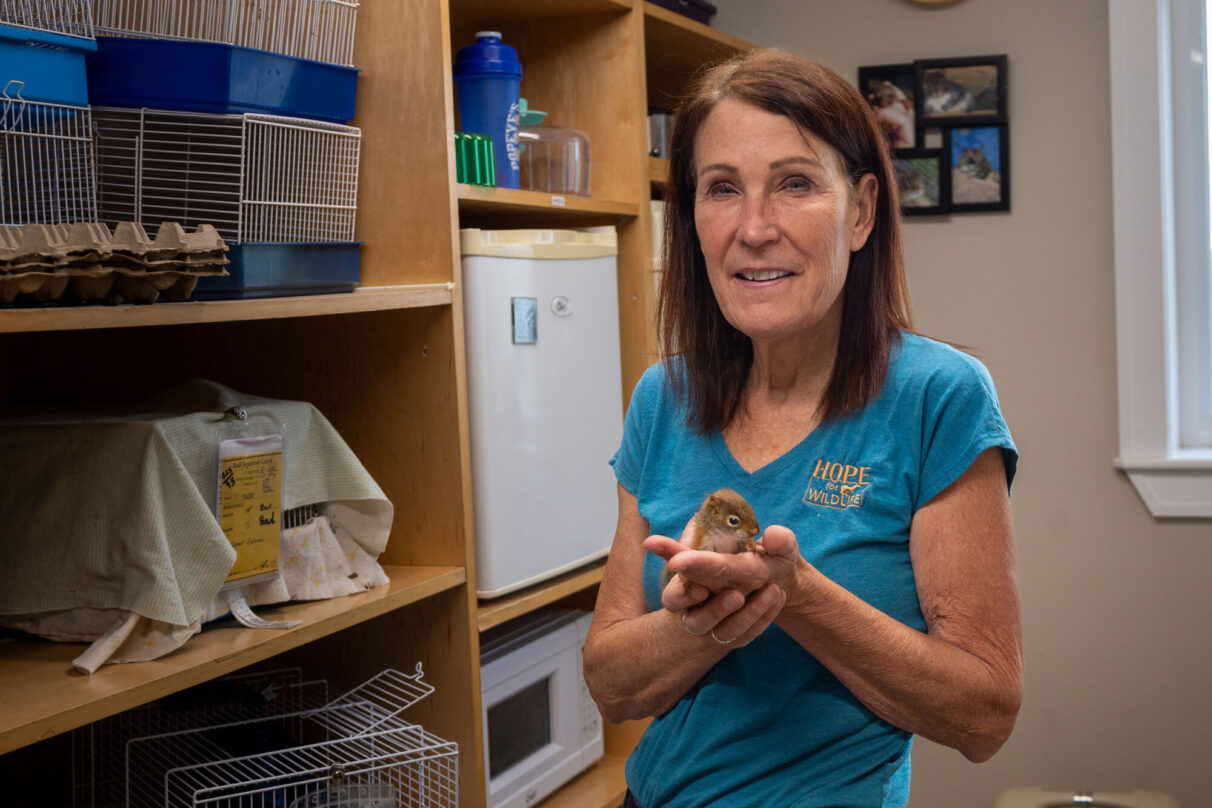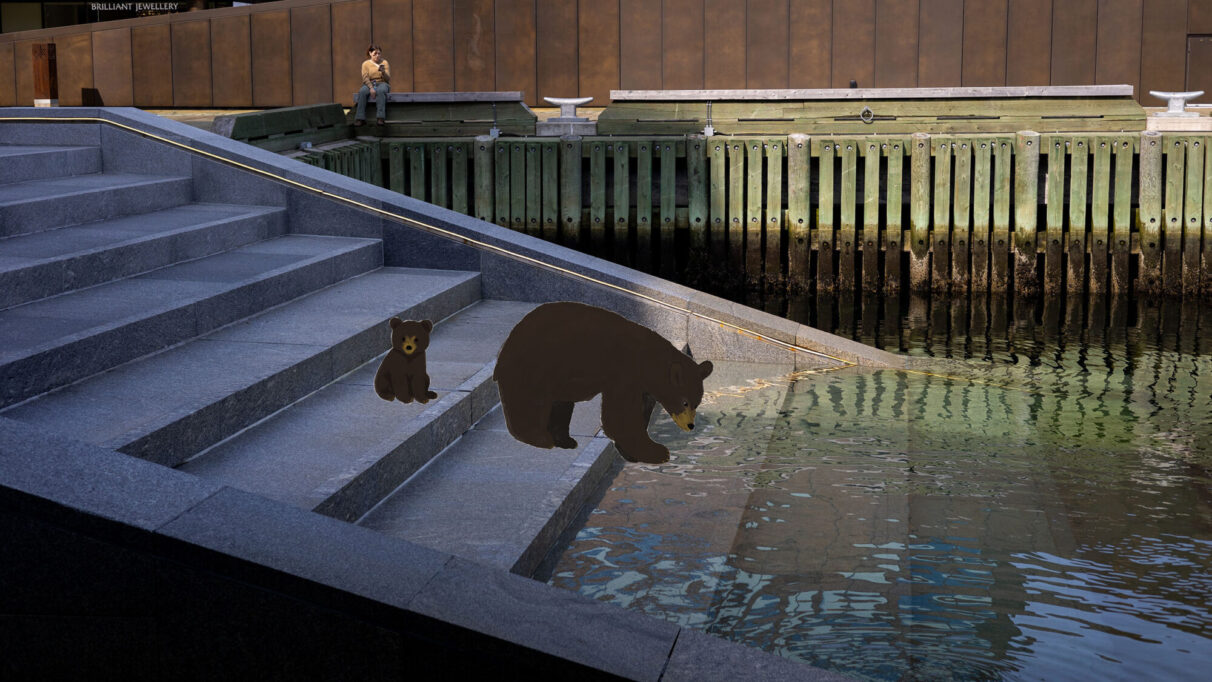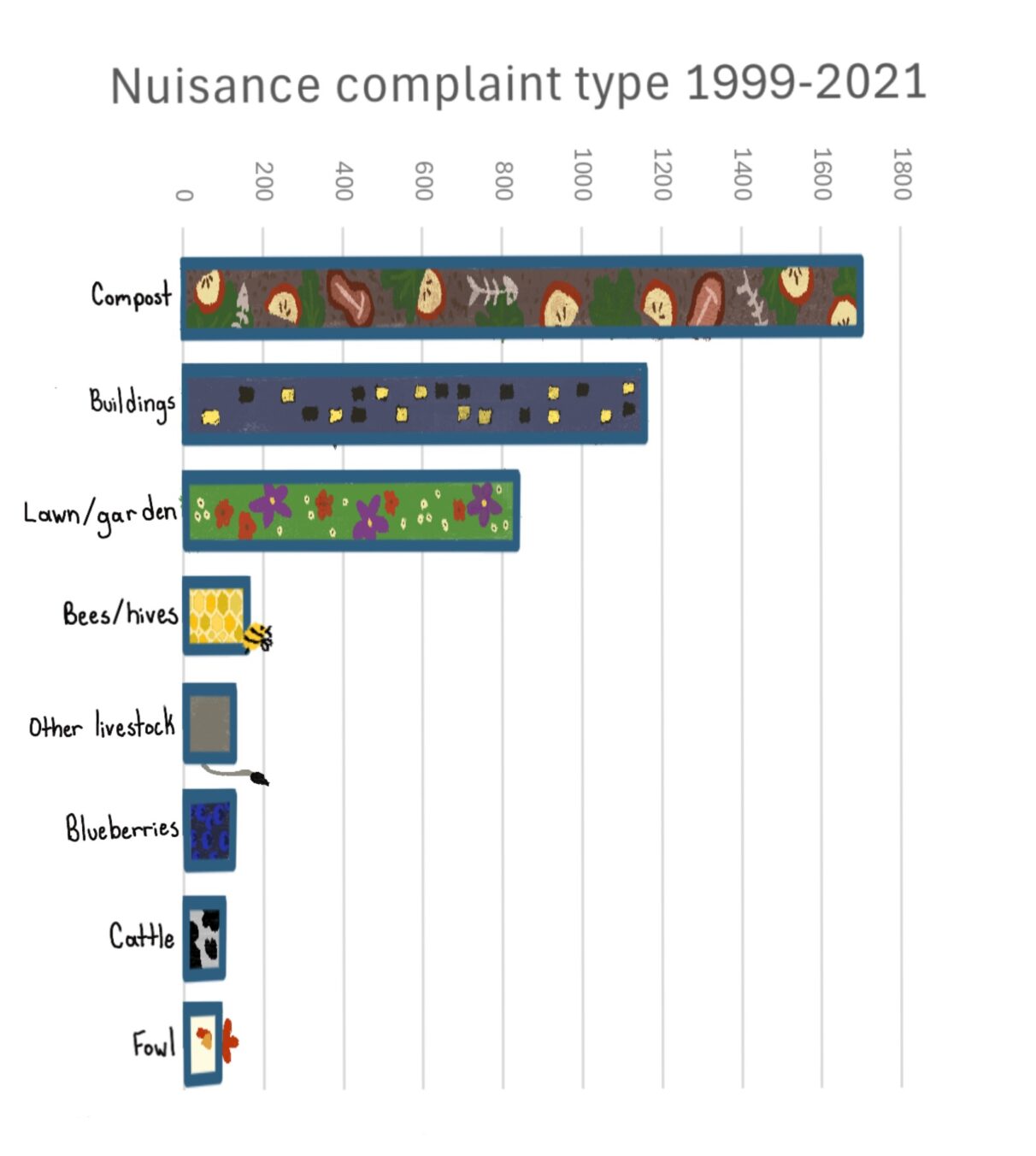The bear necessities

caption
A black bear and her cubs walk through downtown Halifax.Orphaned black bear cubs may soon have a home in Nova Scotia forests
On Easter weekend 2019, Hope Swinimer answered a phone call.
It was someone from the provincial Department of Natural Resources and Renewables (DNR), alerting Swinimer about a black bear cub that needed immediate care. Hope for Wildlife, Swinimer’s rehabilitation centre in Seaforth, Nova Scotia, took in the cub.
“It was a little tiny thing, the most beautiful creature,” Swinimer said. “One of the smallest bear cubs I’ve ever seen.”
After the weekend, Swinimer called DNR back. They were confused because, regardless of the initial call, she wasn’t supposed to have the cub. They said they would come retrieve it.
More than six months later, they finally came to pick up the bear. The plan was to relocate it to New Brunswick.
When DNR officials arrived, “they asked us to step down and they would handle it,” Swinimer said. “They went in and it was a lot of chaos, that bear was terrified.” After escaping twice, the bear was finally in the truck and on its way.
Swinimer and her team came together in a celebratory group hug. They thought the worst was over.
That night Swinimer received another call from DNR. The bear cub was dead. They made it to New Brunswick, but on arrival the cub escaped. When it ran into the woods, the cub was shot and killed.
“It was hard to see good in that case. It was hard to see logic,” says Swinimer.
Hope for Wildlife is the only organization in the province that rehabs large mammals like deer, bobcats and foxes.
“I don’t know why they didn’t let it go, why they didn’t tranquilize it. They shot and killed him. So that was the end.”
That incident started a five-year fight between Hope for Wildlife and DNR for black bear rehab that is still ongoing.

caption
Hope Swinimer holds a baby squirrel at Hope for Wildlife in Seaforth, Nova Scotia.Black bear vs. province
Nova Scotia is one of five provinces and territories that doesn’t rehab orphaned bear cubs.
There is currently no known spot for bears to be released far away from the public. If they can avoid people there’s less of a chance they’ll be problem bears.
With a 17 per cent decrease in forest cover since 2000, Nova Scotians are walking hand in hand with wildlife. There are an estimated 6,600 bears in Nova Scotia.
To avoid black bear interactions, it’s recommended to lock green bins, remove items like barbecues from outside after use, and clean up after meals. Bears are foraging creatures and are drawn to easy meals.
Bear cubs that spend too much time around people during the rehab process can become aggressive.
“We had to be really, really careful on how we worked with them, because at that age the chances of habituating is really high,” said Terrill.
A 2015 study found that only 6.1 per cent of rehabbed black bear cubs attacked livestock/animals, destroyed crops, or caused property damage after being released. The data came from seven jurisdictions across Canada and the U.S. between 1991 and 2012.
The 2019 incident was the first time Swiminer had a bear cub that she tried to rehabilitate. Since then, two more were brought to her from locals. Both were reported to DNR and then euthanized.
“What would have been building our relationship,” Swinimer said, “ended up hurting it.”

caption
A mama and her cub visit the Halifax Waterfront steps.Success in Alberta
Wildlife centres across the country have come to rehab agreements with their provincial government.
An injured bear cub found on the side of the highway was the turning point for Alberta five years ago. The public was throwing sandwiches from cars to the cub and demanding that the province take action. Alberta Environment and Parks then developed the Orphan Black Bear Cub Protocol.
Working with Alberta Institute for Wildlife Conservation, they released six orphaned bear cubs between 2018 to 2020. Five of the six cubs were successfully rehabilitated and released.
Katrina Terrill, executive director of Alberta Institute for Wildlife Conservation, says minimizing human contact is their No. 1 priority.
The centre, located 45 minutes north of Calgary, completed a new bear enclosure designed to be as hands off as possible.
“It has been game changing,” Terrill says.
Four staff members all wear matching masks and overalls. By having a pen that is split in half, they can move cubs from one side to the other. Then they can clean up and put food out without human interaction.
Bear cubs that are exposed to people in rehab will likely look for humans when fully grown, said Terrill. This is what leads to problems.
Terrill says problem bears are just animals being animals. They’re rarely aggressive out of natural instinct.
“We moved into their homes,” Terrill says. “They didn’t move into ours.”
Nova Scotia research
Acadia researcher Mark Mallory was approached by DNR three years ago to study Nova Scotia black bears, as a result of a political promise by the provincial Conservative party during the 2021 election.
The first two years involved studying other jurisdictions across North America.
Fully 63 per cent of respondents said rehabilitation of cubs was somewhat or very successful; only 13 per cent said it was somewhat or very unsuccessful.
Mallory believes there needs to be a better understanding of black bear ecology in Nova Scotia. He’s using GPS collars to track them. One bear is currently collared.
Putting a collar on a bear is not easy. After tranquilizing a bear, two people monitor the bear’s vitals and airways while others awkwardly lift and manoeuvre the heavy animal. It’s like trying to collar a floppy and fuzzy three-seater sofa.
Rehabbed bears should be released far from people and busy roads, other bear territories, and in a suitable habitat, said Mallory.
“You don’t want to create a situation where the bears become a problem,” said Mallory. “Or doesn’t know what’s going on and walks into the front of a truck.”
He says as communities expand it’s inevitable that there will be more bear encounters across Nova Scotia. He says people need to know bear safety and that black bears are just hungry animals looking for food.
“I don’t like the term aggressive because we automatically associate aggressive with bad,” Mallory said. “ ‘Bold’ is a better term.”
DNR
Jason Power, the senior provincial biologist of large mammals, works in DNR’s Kentville office. He is part of the team working with Mallory. Power says little is known about black bears in Nova Scotia. He’s hoping that by tracking and studying their movements DNR will be able to find the best place to release bears getting out of rehab.
“Rehab can’t happen,” he says, “unless you know something about black bears.”
According to him, it’s hard to find areas suited for bears that are far away from homes. This complicates the search for places to release bear cubs.
He believes some areas in the province could be potential release sites. The plan now is to gather enough information to confirm and find it.
“Hopefully it will lead to better bear management,” says Power. “And drive some scientific rigour when it comes to rehab.”
Swinimer was surprised to hear about the study at Acadia.
In March 2024, Swinimer met with Premier Tim Houston and the director of wildlife for DNR, Andrew Boyne, to talk about black bears. It was decided that Swinimer would rewrite a proposal to rehab bears that she first put together in 2020.
They made a commitment to Swinimer in that meeting to get the policies and procedures in place for spring 2025.
Boyne said DNR would talk with Swinimer if there are any reports of orphaned bear cubs before the permits are in place. He says that there haven’t been any such reports in the last year.
“We’re not solving an epidemic here,” Boyne says. “There are one or two reports most years, but this is not a major problem.”
Looking forward
Down a trail in the backwoods of Hope for Wildlife’s 21-acre property is a clearing. It’s beside a lake with no house in sight. In 2019 it was prepared for what Swinimer believed would be the bear unit.
As years passed, the clearing has grown over with new trees. Still, Swinimer can picture what the future looks like.
On average, a 12-month-old bear cub weighs between 30 and 70 pounds. Hope for Wildlife’s bear unit would be the size of a two-car garage with 16-foot fences to prevent climbing.
Saying she has nothing to lose, this winter Swinimer plans to start building. The area will be used, whether for black bears or not.
“I really believe it’s going to happen. Next spring, I’m going to be rehabbing black bear cubs,” she says. “I can see a glimmer of hope.”

About the author

Elena Neufeld
Elena Neufeld grew up on a farm near Margaret, Manitoba. She loves photography and film and is a member of the UKC women's volleyball team.

J
JohnWesley